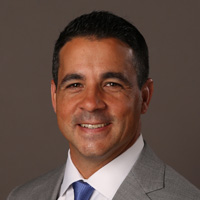Cure Your IRA Tax Infestation with a Roth
Nasty taxes are hiding in 401(k)s, 403(b)s and traditional IRAs. To help eradicate that problem, Roth accounts could give you the flexibility you'll need for retirement.


Roth IRAs have been around for more than 20 years, yet I regularly meet retirees and pre-retirees who haven’t even considered using one as part of their financial plan.
After years of speaking with seniors and other savers at educational workshops, this seems to me a symptom of a bigger problem: A lot of people just aren’t receiving proper tax planning from their financial professional. Maybe it’s a lack of good training, overall apathy or, worse, negligence on the part of the person who is giving them advice, but these folks often aren’t aware that without proactive planning, taxes could take a sizable chunk from their retirement funds.
For years now, people have been conditioned to invest most of their money in tax-deferred retirement accounts (IRAs, 401(k)s, 403(b)s, etc.) or, as I like to call them, tax-infested accounts. People are never pleased when they’re reminded that when they retire, they’ll be handing over a portion of their savings to Uncle Sam, who’s been waiting eagerly to get his hands on the money they’ve accumulated over the years. Not only that, but if they go over a designated income threshold, determined by their filing status, it could trigger a tax on a portion of their Social Security benefits. Medicare premiums also increase for those with higher incomes.

Sign up for Kiplinger’s Free E-Newsletters
Profit and prosper with the best of expert advice on investing, taxes, retirement, personal finance and more - straight to your e-mail.
Profit and prosper with the best of expert advice - straight to your e-mail.
Of course, if your income will be lower when you retire than when you were pumping money into your savings, and if tax rates are the same or lower when you retire, you might not have a problem. But that’s a gamble. The national debt is more than $23 trillion, and we know the Social Security and Medicare trust funds will need more money to continue paying benefits at their current levels in the future. The money to set those things right has to come from somewhere, and most experts predict it will come from you — through higher taxes. Meanwhile, you’ll likely lose some big tax deductions as your children grow up and you pay off your mortgage.
But let’s talk about now. Right now, and through 2025, tax rates have been lowered by the Tax Cuts and Jobs Act. As a result, savers who put their faith — and their investment savings — in a tax-deferred account have an opportunity to take back control of their retirement by moving some or all of that money to the nontaxable world.
One great way to do that is with a Roth account. Contributions to a Roth are made on an after-tax basis, so it will cost you more upfront, but your investment savings can continue to grow without the burden of taxation.
Another reason to consider converting: The new SECURE Act has eliminated the popular “stretch” IRA, and non-spousal beneficiaries now have only a decade to empty an inherited IRA. If you plan to leave all or part of your tax-deferred retirement account behind, a Roth conversion now could save a loved one from a scary tax bill later.
Each type of Roth is a little bit different, and you should take the time to find the strategy that best suits your needs. Here are a few basics:
Roth IRA:
- To contribute to a Roth IRA, you must have earned income in the year you make the contribution.
- For most taxpayers, the contribution limit for 2020 is $6,000 with an extra $1,000 catch-up contribution for those 50 or older. However, if your income exceeds the designated limit for your filing status, the amount of your Roth IRA contribution will be reduced. The ability to contribute starts phasing out at incomes of $134,000 for singles and $196,000 for those who are married filing jointly. Once incomes hit $139,000 (for singles) or $206,000 (for married couples filing jointly), you can't contribute anything a Roth. (For more specifics, see How Much Can You Contribute to a Roth IRA?)
- There are no required minimum distributions (RMDs) with a Roth IRA.
Roth 401(k):
- There are no income limits for a Roth 401(k). The only criteria for contributing is that your employer must offer the option.
- In 2020, you can contribute up to $19,500, with a catch-up contribution of $6,500 if you’re 50 or older. (For more specifics, see How Much Can You Contribute to a Roth 401(k)?)
- Employer contributions to a Roth 401(k) are made pre-tax (like a regular 401(k)) and will grow tax-deferred alongside your own Roth contributions. When you withdraw money, you’ll owe income tax on the employer match.
- There are RMDs with a Roth 401(k), but you do not pay taxes on them.
Roth Solo 401(k)
- A Roth solo 401(k) covers a business owner with no employees or the business owner and spouse.
- The business owner acts as both employee and employer, and contributions can be made in both capacities.
- These plans have the same rules and requirements as other Roth 401(k) plans.
Backdoor Roth
- If your income is over the IRS limits, you can still take advantage of a Roth IRA by converting money from an existing retirement account, such as a traditional IRA. You’ll have to pay taxes on the amount you convert (unless the funds you’re converting include some after-tax contributions from the traditional account), and there are rules regarding when you can withdraw the money from your Roth. But this method for getting into a Roth account is fully acceptable to the IRS. And you won’t have to worry about taxes on this money in the future.
- Beware of the “pro-rata rule”: You may be taxed on your Roth conversion if you have money remaining on other “pre-tax” IRA accounts. If you already have pre-tax IRA money, it must be combined with the after-tax IRA contributions before the conversion takes place. Only the percentage amount of after-tax IRA money relative to the total amount of IRAs (pre-tax and after-tax) can be converted tax free. The rest will be considered taxable.
Mega Backdoor Roth
- A mega backdoor Roth offers some investors an opportunity to contribute even more money to a Roth IRA via their employer’s 401(k) (if the plan allows for after-tax contributions over and above employee contribution limits) and/or through a Roth 401(k).
- This is a complicated process that likely will require consulting with a tax professional.
Whether you’re just starting to save for retirement or nearing the finish line, there are many advantages to including a Roth account in your overall financial plan.
For young people, it’s about paying tax on the seed instead of the harvest. For older savers who’ve been kicking the tax can down the road, it’s an opportunity to diffuse a ticking tax time bomb. Either way, a Roth account can provide added flexibility when it comes to managing your tax liability in retirement.
Kim Franke-Folstad contributed to this article.
The appearances in Kiplinger were obtained through a PR program. The columnist received assistance from a public relations firm in preparing this piece for submission to Kiplinger.com. Kiplinger was not compensated in any way.
Profit and prosper with the best of Kiplinger's advice on investing, taxes, retirement, personal finance and much more. Delivered daily. Enter your email in the box and click Sign Me Up.

David Faulkner is a CERTIFIED FINANCIAL PLANNER™ professional with Texas-based Spectrum Advisors (www.spectrumadvisors.net). His focus is on holistic retirement planning and financial awareness, and he is fully licensed in investments and insurance.
-
 The Best FSA or HSA-Eligible Amazon Prime Day Deals You Can Shop Now
The Best FSA or HSA-Eligible Amazon Prime Day Deals You Can Shop NowDouble down on savings by taking advantage of these early Prime Day deals that are FSA or HSA eligible. Save on fitness trackers, air purifiers, baby gear and more.
-
 Stock Market Today: It's 'All Sectors Go' Ahead of Independence Day
Stock Market Today: It's 'All Sectors Go' Ahead of Independence DayThe resilience trade continues to work, even for sectors and stocks with specific uncertainties.
-
 Investing Professionals Agree: Discipline Beats Drama Right Now
Investing Professionals Agree: Discipline Beats Drama Right NowBig portfolio adjustments can do more harm than good. Financial experts suggest making thoughtful, strategic moves that fit your long-term goals.
-
 'Doing Something' Because of Volatility Can Hurt You: Portfolio Manager Recommends Doing This Instead
'Doing Something' Because of Volatility Can Hurt You: Portfolio Manager Recommends Doing This InsteadYes, it's hard, but if you tune out the siren song of high-flying sectors, resist acting on impulse and focus on your goals, you and your portfolio could be much better off.
-
 Social Security's First Beneficiary Lived to Be 100: Will You?
Social Security's First Beneficiary Lived to Be 100: Will You?Ida May Fuller, Social Security's first beneficiary, retired in 1939 and died in 1975. Today, we should all be planning for a retirement that's as long as Ida's.
-
 An Investment Strategist Demystifies Direct Indexing: Is It for You?
An Investment Strategist Demystifies Direct Indexing: Is It for You?You've heard of mutual funds and ETFs, but direct indexing may be a new concept ... one that could offer greater flexibility and possible tax savings.
-
 Q2 2025 Post-Mortem: Rebound, Risks and Generational Shifts
Q2 2025 Post-Mortem: Rebound, Risks and Generational ShiftsAs the third quarter gets underway, here are some takeaways from the market's second-quarter performance to consider as you make investment decisions.
-
 Why Homeowners Should Beware of Tangled Titles
Why Homeowners Should Beware of Tangled TitlesIf you're planning to pass down property to your heirs, a 'tangled title' can complicate things. The good news is it can be avoided. Here's how.
-
 A Cautionary Tale: Why Older Adults Should Think Twice About Being Landlords
A Cautionary Tale: Why Older Adults Should Think Twice About Being LandlordsBecoming a landlord late in life can be a risky venture because of potential health issues, cognitive challenges and susceptibility to financial exploitation.
-
 Home Equity Evolution: A Fresh Approach to Funding Life's Biggest Needs
Home Equity Evolution: A Fresh Approach to Funding Life's Biggest NeedsHomeowners leverage their home equity through various strategies, such as HELOCs or reverse mortgages. A newer option: Shared equity models. How do those work, and what are the pros and cons?